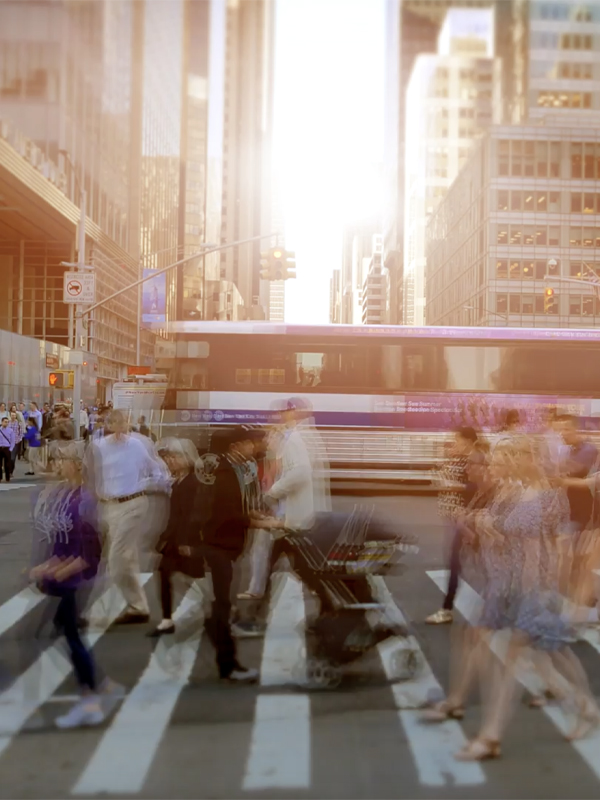Elizabeth Toenyes, Content and Editorial Strategist at Aquent, sat down to discuss accessibility in the metaverse with Nitin Thukral, Vice President, Digital Solutions & Services Delivery at Aquent Studios, and Giovanni Castillo, Sr. Metaverse Designer at Aquent. The following interview was condensed and lightly edited for clarity. To hear the full interview, listen to the audio above.
Can you tell me a little bit about yourself and your experience with the metaverse?
Nitin Thukral:
I currently lead the digital capabilities practice within Aquent Studios, working with Fortune 500 global brands and helping them co/create tailored user experiences. And although I'm not technically a digital native, I've grown up under the ubiquitous influence of the internet and modern technologies.
Giovanni Castillo:
I'm a Senior Metaverse Designer at Aquent. And we're involved here at prototyping virtual communities for the future, especially in the business-focused areas. And my background is in media and simulation. About five or six years ago, maybe actually closer to eight years ago, I started a virtual reality lab. An immersive lab that I built and designed at Northern Arizona University (NAU), but presently applying all those skills and lessons learned into the Aquent enterprise and what we are envisioning as the future of immersive technologies and virtual communities.
Can you tell me what it really means to make the metaverse accessible?
Giovanni Castillo:
It is in some ways an accessible medium because of the paradigm and technology. By virtualizing our experiences, telecommunications tools have revolutionized accessibility to many things. And for me, it really means how do we enable people of different capacities to be able to access, physically and virtually, experiences, learning, and teaching in these worlds?
So the metaverse, by virtue of the technologies we use, like VR or AR, or screen-based interfaces, really is an accessible medium that all of a sudden opens up the world to many more people that perhaps couldn't access these experiences before in person.
Nitin Thukral:
If I take a step back, I think it's important for us to first understand what accessibility means. A good definition in the Web 2.0 world is the practice of making information, activities, and environments meaningful, sensible, and usable for as many people as possible.
If we take that definition and apply it to the metaverse, it means different things to different people depending on their perspective. But it's really a matter of universal acceptance. If you keep that in mind, we'll have the ability to design universal access for people from all walks of life and with all abilities.
By virtualizing our experiences, telecommunications tools have revolutionized accessibility.
Giovanni Castillo, Sr. Metaverse Designer at Aquent
At this early stage of development in the metaverse, why is thinking about accessibility so important?
Giovanni Castillo:
Accessibility is also in the early stages of technology or development. This means that there are a lot of different ways to make things easier to use for people with different needs. For example, some people can access more experiences and technologies because of advances like computers or virtual reality (VR). But there are also limitations to the technology, which requires only certain individuals be able to access them. For example, I had a student that had a neurological injury, and that person could not see stereoscopically and so therefore, they could not put on headsets. And a good percentage of the population, even though they might not have neurological impairments, may have other conditions that prohibit them from using VR.
We have to think about how we can design for different types of users. That's why it's important that the metaverse is platform agnostic. This means that it can be accessed on different platforms and experienced in different ways. This is important for accessibility because it means that more people will be able to access and experience it.
Nitin Thukral:
I think it's critical to get accessibility right upfront while we're at the onset of the metaverse.
As technologists, we have a responsibility to make the metaverse universally accessible. Experiences that were once only accessible to a limited group or a subset of the population base in real life are now available to much larger audiences through these virtual worlds and spaces, similar to the one where we're currently meeting in.
That really is the essence of the work that we do at Aquent Studios. We encourage brands and clients we work with to explore the metaverse and value accessibility in the same way they have for generations. For example, if your target audience is primarily mobile, perhaps mobile experiences should be tailored to those devices, especially while we're all still learning the ropes.
Experiences that were once only accessible to a limited group or a subset of the population base in real life are now available to much larger audiences. -Nitin Thukral
Are there any solutions that already exist to accommodate some of these digital accessibility needs that would transfer to the metaverse?
Nitin Thukral:
There are technologies that can be repurposed for the metaverse. A simple example is closed-captioning technology, which now includes live captions powered by AI.
You can easily take that and report it between the current-stage internet as we know it to the foundations of the metaverse. The World Wide Web Consortium publishes guidelines as part of its Web Accessibility Initiative, which also can help steer a lot of the work that is going into making the metaverse accessible.
Giovanni Castillo:
We can use sign language quite well now because we have hand tracking and some of the productivity applications where our avatars are a lot more articulated. It makes accessibility for a lot of groups do things where we could never have conceived it as easily before.
How can designers consider accessibility when creating these immersive experiences?
Giovanni Castillo:
How do we design for this new paradigm in the professional and creative worlds? How do we design a guideline? I think platform developers should think about this and give us tools to design for accessibility. Hardware inputs may help users who need to use controlled devices differently. Visual or auditory input or output from these platforms must be conceptualized. We must start designing for it immediately and approach platform developers for help and tools.
Nitin Thukral:
I think of it in broader terms, where accessibility encompasses so many areas of focus.
There are physical and geographic limitations; there's monetary inequity; there are systematic problems. And so when you think about designing these immersive experiences, we should ideally bring together teams that are diverse in terms of age, ethnicity, gender, identity, career background, et cetera, and just those different viewpoints, those different perspectives will make it easier to identify gaps in accessibility from the beginning.
We're not designing with just one lens in front of us; we're designing with multiple lenses, and then they converge into this truly immersive experience that really is, from my perspective, the Holy Grail when it comes to accessible design.
Nitin Thukral, Vice President, Digital Solutions & Services Delivery at Aquent Studios
What steps do managers need to take in order to ensure people with disabilities are represented on their design and development teams and in their UX research?
Nitin Thukral:
It is critical to intentionally seek out people with diverse needs and then make intentional decisions with them in mind.
The benefit of doing that is that you have these multifaceted perspectives, which ties back to one of the important premises of human-centric design. When you understand the people you're trying to reach and then design from their point of view, you'll come up with unexpected answers and ideas that those people will embrace. And that really is the fundamental premise of immersive design.





